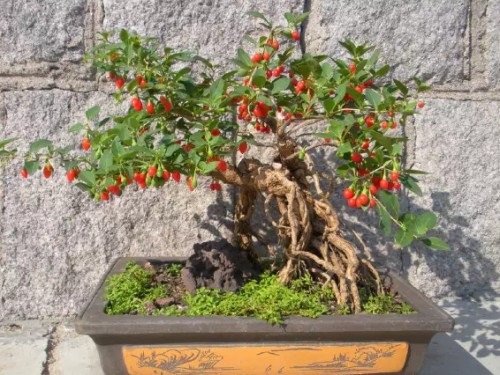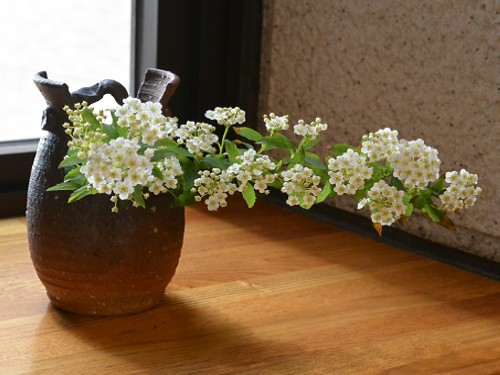The Culture method of potted Flower and Leaf Stone
Flowers and leaves turn into stones, and leaves turn into flowers. Mosaic stone can be propagated by cuttings in any season of the year, but spring and autumn are generally chosen, because the rooting rate can reach more than 98% in both seasons. In a year, nitrogen fertilizer can be applied mainly from March to August to promote plant growth, while in September and early October, appropriate amount of phosphorus and potassium fertilizer will be applied to promote the robust growth of plants, and then pruning will be banned from October to avoid damage to flowers and leaves.
Huaye Luoshi is one of the excellent landscaping ground cover tree species newly developed and respected in Japan. This variety stands out among the existing landscaping ground cover plants because of its gorgeous, strong nature, excellent resistance, extensive cultivation and management and other advantages.

So how can we raise it well?
First of all, we should know that the most suitable for breeding it is to have this well-drained acidic or neutral soil environment, its disease resistance can be very strong, and the growth is also very exuberant. At the same time, it also has strong resistance to drought and short-term flood and cold resistance, and the change of leaf color and light are related to the growth status, and the gorgeous color performance also requires it to have good light conditions and exuberant growth conditions.
Generally speaking, we can propagate it by cutting at any season of the year, but if it is in spring and autumn, its rooting rate will be as high as 98%. Cutting it in summer will rot some of the tender branches, but the branches that reach semi-Lignification can take root and survive. It can be cultivated in a semi-shaded and loose and fertile environment, and when the plant reaches a certain length and has more branches, it can be transplanted to a place with strong light for cultivation, so as to achieve a bright leaf color.
We can also realize cultivation in the south of the Yangtze River valley, and in order to survive the winter safely, we can also take appropriate protection measures, such as increasing light for him, and fertilizing it from March to August. This will further promote the growth of the plant, and it can also be fertilized properly from September to the first ten days of October to promote the health of the plant. It will be banned from pruning in October, and if it is an ornamental plant for indoor potted plants, you can choose any area, especially the area with good light conditions is more suitable for its growth.
The editor believes that as long as you achieve the above points, the flower and leaf stone you cultivate will be more beautiful and more dynamic.
The main ornamental effects of mosaic stone are red leaves, pink leaves, pure white leaves, variegated leaves and green leaves. If you want to get such a perfect effect, you must take good care of it and cultivate it well. The following is to introduce the maintenance methods of Huayeluo stone:
Place: Luoshi bonsai should be placed in a slightly shady place with moist air. Winter can be slightly cold-resistant, transfer to the general indoor can.
Watering: Luoshi likes Yin and dampness, but avoid waterlogging. Usually to keep the basin soil moist, should not be too dry, but also pay attention not to make the basin stagnant water.
Fertilization: during the growth period of spring and summer, organic liquid fertilizer can be often applied, such as rotten cake fertilizer and water.
Pruning: cut off residual branches and withered leaves and overlong and dense vines at any time to maintain a certain shape.
Turn the basin: turn the basin every 2-3 years, preferably before sprouting in spring. Keep the old 1B2 soil and replace it with rich and loose humus and cover the bottom of the basin with coarse sand or vermiculite to facilitate drainage.
Time: 2019-06-01 Click:
- Prev

What about Chinese wolfberry bonsai leaves and yellow fallen leaves
Chinese wolfberry is a kind of nourishing traditional Chinese medicine, this plant has strong sprouting and tillering, it has been appreciated by potted plants since ancient times, usually the branches of Chinese wolfberry hang very elegant, its flowers are purple, and the red fruit is covered with branches after autumn, no matter when the ornamental effect is very good. The branching ability of Lycium barbarum is strong, and the new branches are thriving.
- Next

What about the yellow leaves?
Pearl plum in the bud before blooming shape like pearls, a full such as pearl particles, after blooming, white and small flowers like snow, because the bud white bright as beads, petals and stamens like plum blossom and named pearl plum. Pearl plum is shaped like pearl and looks like Xuemei. luxuriant growth, plump plant clusters, delicate branches and leaves, green leaves and white flowers
Related
- Fuxing push coffee new agricultural production and marketing class: lack of small-scale processing plants
- Jujube rice field leisure farm deep ploughing Yilan for five years to create a space for organic food and play
- Nongyu Farm-A trial of organic papaya for brave women with advanced technology
- Four points for attention in the prevention and control of diseases and insect pests of edible fungi
- How to add nutrient solution to Edible Fungi
- Is there any good way to control edible fungus mites?
- Open Inoculation Technology of Edible Fungi
- Is there any clever way to use fertilizer for edible fungus in winter?
- What agents are used to kill the pathogens of edible fungi in the mushroom shed?
- Rapid drying of Edible Fungi

